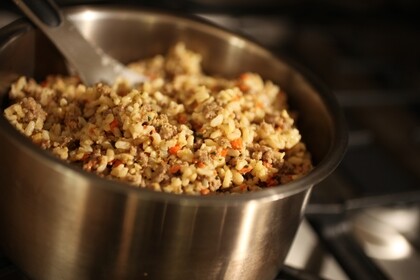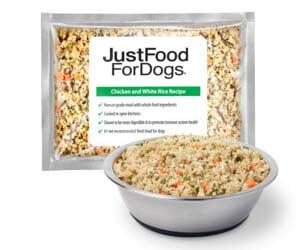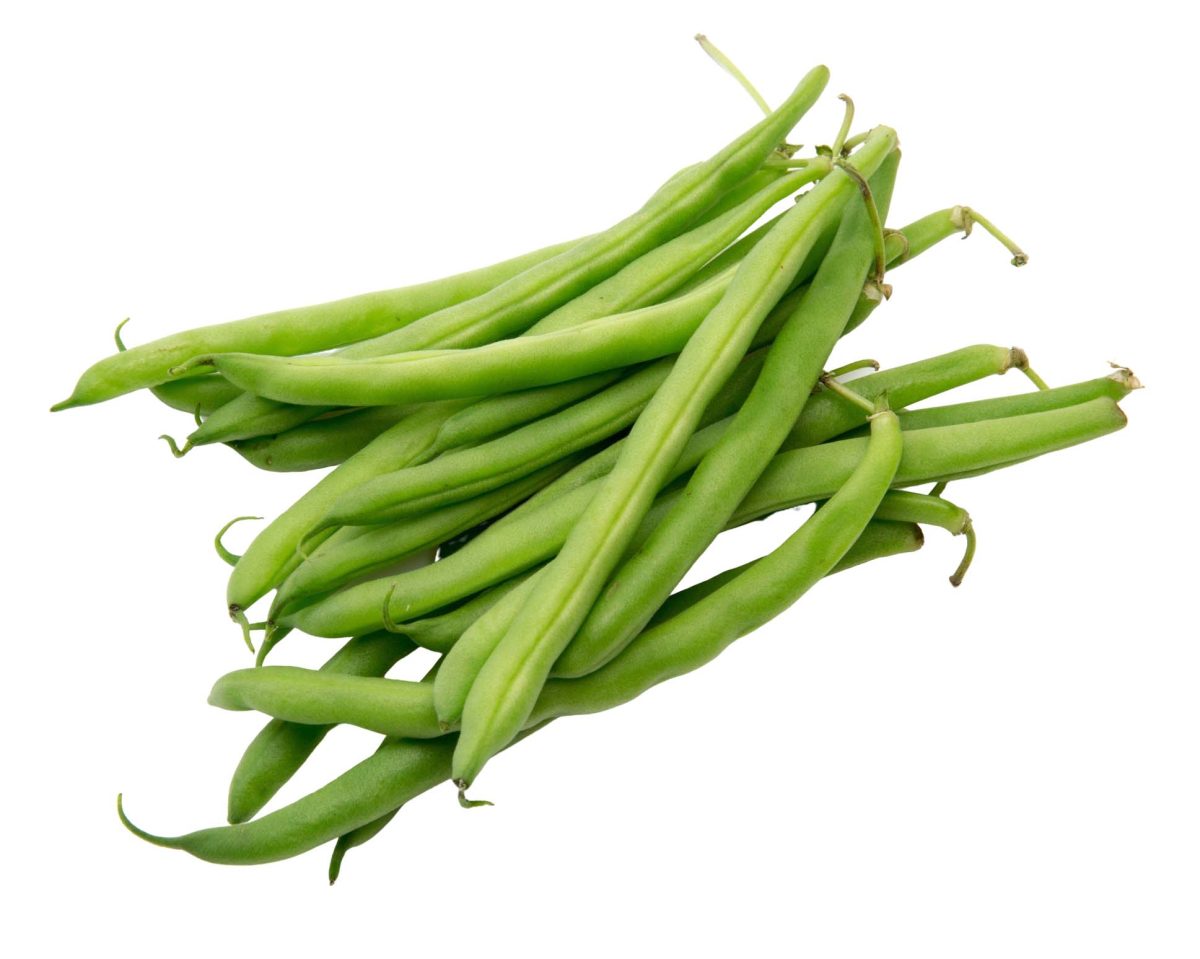Chicken and Rice for Dogs 101
DVMs weigh in on everything you need to know about chicken and rice for dogs.
Maybe it’s the telltale sound of your dog vomiting, or a messy, smelly “deposit” they make during your daily walk. Or maybe you’ve noticed your typically voracious eater is suddenly disinterested in his regular dog food. Whatever the cause, there’s one tried-and-true remedy many pet parents turn to when they suspect a dog is in intestinal distress: good ol’ reliable chicken and rice.
While a prolonged case of intestinal distress requires a trip to the veterinarian for a check-up, chicken and rice can do wonders for dogs suffering from a simple upset stomach.
Digestive issues and sensitivities aside, a properly balanced diet of chicken and rice can be a great, nutritious choice for any dog, from growing puppies to senior pets.
To get the biggest health benefits out of this simple dish, here’s what pet parents should know when putting chicken and rice on the menu.
Is a Chicken and Rice Diet Good for Dogs?
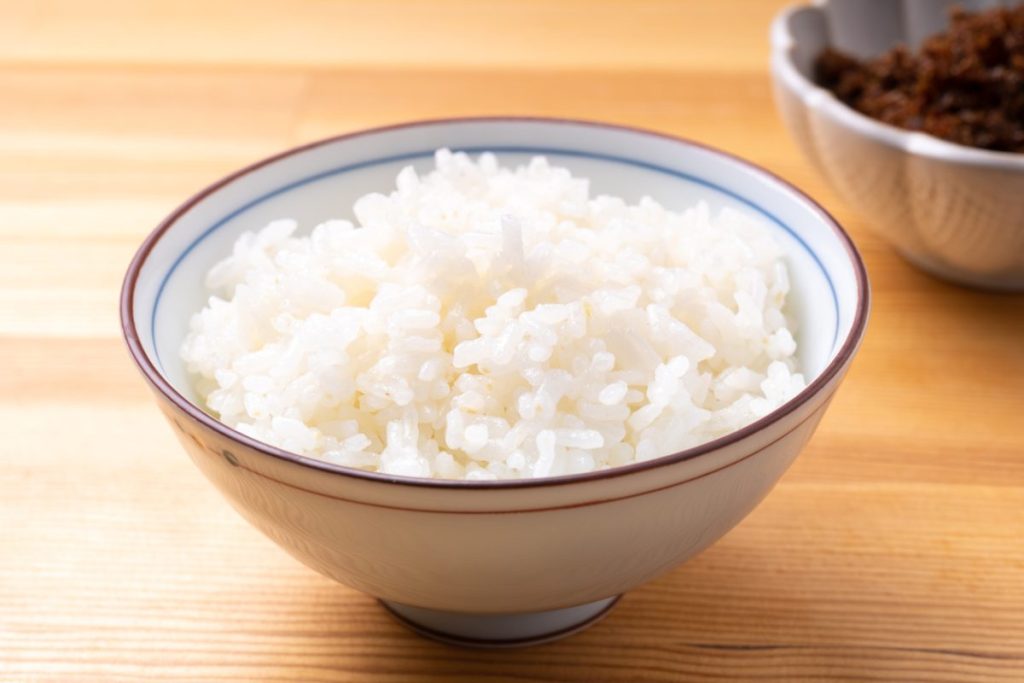
Canine stomach woes can occur for many reasons. From digestive problems caused by a diet of rich or fatty foods to gastroenteritis (often related to dietary indiscretions). Veterinarians will often recommend a “bland diet” of chicken and rice to soothe a dog’s upset stomach.
According to board-certified veterinary nutritionist Dr. Dan Su, MS, DVM, DACVIM-Nutrition, chicken and rice for dogs with upset stomachs is helpful. When prepared correctly, the combination is highly digestible and low fat. That makes the meal easier for your dog’s gastrointestinal (GI) tract to process as their gut gradually heals and returns to normal.
However, it’s important to know that chicken and rice isn’t always the best immediate choice for every dog suffering stomach upset.
If a dog is vomiting, talk to a vet about how to feed them chicken and rice, says Dr. Kendra Scheibe, DVM. Some dogs might require a brief period of rest with no food at all. This is to allow stomach inflammation or discomfort to settle down.
Additionally, some conditions that present with stomach distress, like pancreatitis, can be more serious. So it’s best to consult with your veterinarian before adopting chicken and rice as a universal cure-all.
Palatability
Once you get the OK, chicken and rice have the added benefit of being highly palatable. That is especially important when it comes to nourishing dogs who may not have much of an appetite. The appealing taste encourages dogs to eat while their GI problems are resolved.
Su adds that chicken and chicken broth have high omega-6 fatty acids, high-protein, and is low-fat. Rice is relatively energy-dense compared to foods like potatoes. A dog with stomach issues won’t need to eat as much to meet its daily energy requirement.
“The glucose from rice starch is quickly absorbed, which has been shown in children experiencing diarrhea to increase water and electrolyte absorption,” says Su. “This can help decrease stool output, reduce diarrhea duration, and the amount of IV fluids needed.”
How long should your dog be on chicken & rice?
Typically, a bland diet of chicken and rice for dogs with diarrhea or vomiting is required for a short period of time. It is usually discontinued three-to-four days after stomach upset, or when the dog’s vomiting stops and stools return to normal.
But that doesn’t mean pet parents should jump right back into a typical feeding routine.
Once the gastrointestinal signs have resolved, experts advise a slow transition back to your dog’s regular diet. First, replace a quarter or third of the chicken and white rice with your dog’s typical food. Then, increase the amount each day until your dog is fully back on a normal diet.
Chicken and Rice for Healthy Dogs
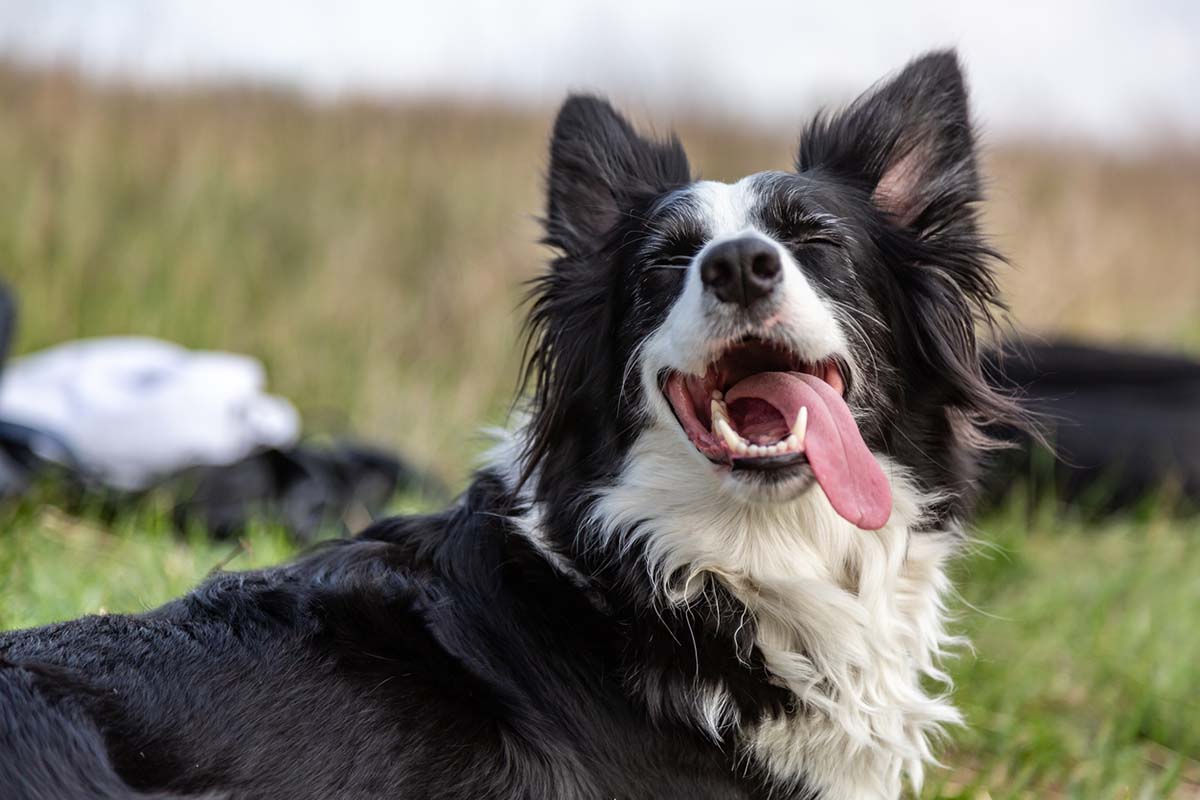
Chicken and rice isn’t just a dish for dogs struggling with bowel movements or constipation. The mixture is a tantalizing add-in for selective eaters since most dogs can’t resist the taste.
It’s also a great fit for those who want to add the nutritional benefits of amino acid-rich, fresh, whole-food ingredients to boost standard kibble-based fare. Plus, if your pup has gluten sensitivities, rice is a great carbohydrate alternative.
But here’s an important detail every pet parent should know: Though chicken and rice for dogs are suitable as components of a meal, the two ingredients alone are not enough to meet the requirements to be considered a complete and balanced diet, says Su.
Pet parents who want to make home-prepared boiled chicken and rice a staple of their dog’s diet need to go a little further to ensure the meal meets all their pet’s nutritional needs.
Adding fresh whole ingredients, like spinach, carrots, and apples can boost the nutritional profile. But the only way to guarantee the required nutritional balance for long-term feeding is to supplement the meal with a veterinarian-approved mix of key vitamins and minerals, like JustFoodForDogs’ Do It Yourself Nutrient Blend.
Using a veterinarian-approved recipe and supplement blend allows pet parents to deliver all the tasty appeal of human food — like chicken and rice — while ensuring their dog receives the essential nutrients necessary for peak health.
How to Cook Chicken and Rice for Dogs
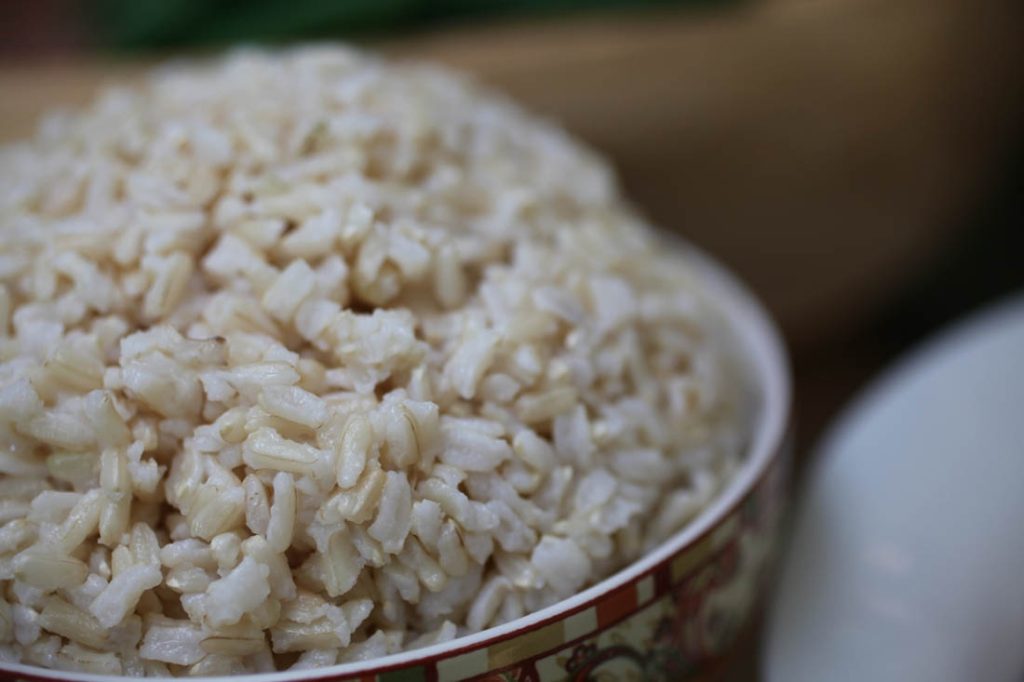
The key to preparing your dog rice and chicken is simplicity. But don’t let the limited ingredients fool you. There are important guidelines pet parents should keep in mind to get the best outcome for their dog’s health issues.
Breast is best. Bones pose a choking hazard. So, boneless chicken breasts are the best protein choice for dogs with upset stomachs. While dark meat and chicken thighs contain more nutrients, it’s also higher in fats, which may make it difficult to digest. Stick with lean protein.
Not all rice is created equal. If you’re tempted to swap brown rice for white, think again. Brown rice is a whole grain that contains more fiber, making it harder on your dog’s digestive tract. Experts advise pet parents to stick with long-grain white rice to soothe a pet’s stomach upset.
Less is more. There’s no need to add fats, oils, or seasonings during the preparation process; they can irritate your dog’s stomach and increase intestinal distress. Bland food is best for sensitive stomachs.
Cooking the Chicken & Rice
To prepare boiled chicken for dogs: Put a pot of water on high heat. Put the raw chicken (remember: no chicken bones!) in boiling water until fully cooked. Once cooked, cube or shred the chicken meat into bite-sized pieces that are the appropriate size for your dog to eat easily. Let cool to room temperature.
It’s not necessary to cook the cup of rice until mushy, says Scheibe. But be sure not to undercook it, since partially cooked rice takes more effort for dogs to digest. Combine the shredded chicken pieces with the cooked rice and store in an airtight container.
For pet parents who want to incorporate a chicken and rice recipe for dogs into their rotation on a long-term basis, commercially prepared whole-food diets are a convenient way to take the guesswork out of feeding fresh ingredients while maintaining the quality of homemade dog food.
A shelf-stable meal like Pantry Fresh or fresh frozen Chicken and Rice are both nutritionally complete meal systems. They have all of the benefits of feeding chicken and rice for dogs without having to cook it yourself. You can also use it as a topper on your dog’s regular food.
How Much Chicken and Rice Should You Feed Your Dog?
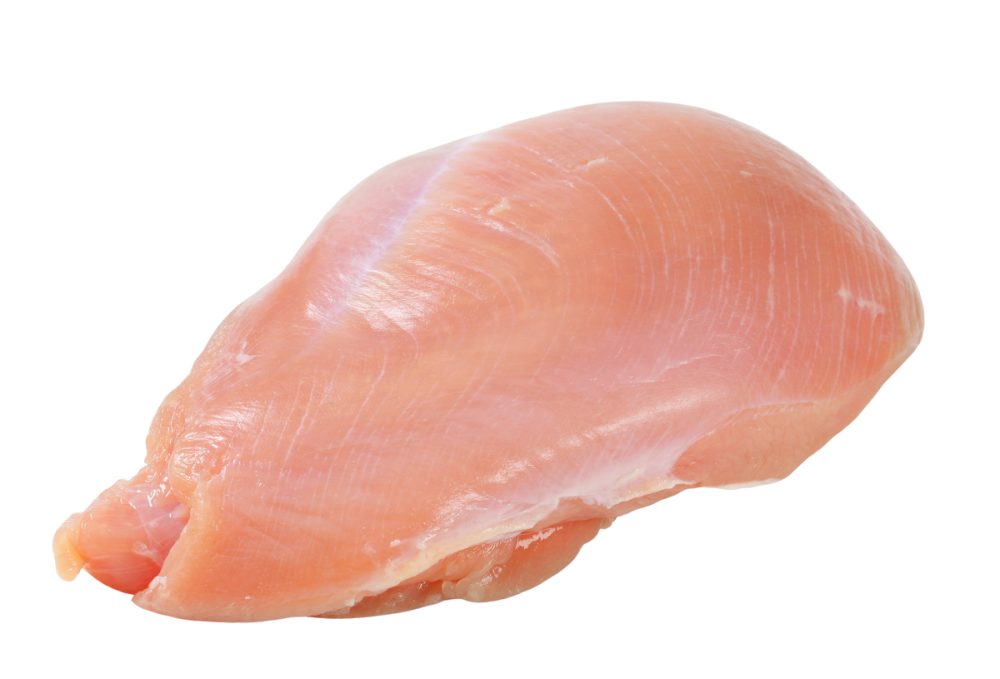
Most boiled chicken and rice for dogs recipes call for two parts white rice to one part boneless skinless chicken breast. (For example, two cups white rice with one cup of chicken.)
Su recommends feeding whatever volume your dog is used to getting per day with its regular diet. However, divide the ration into smaller portions and feed more meals to reduce stress on the digestive system.
Dog owners interested in incorporating freshly prepared chicken and rice meals, whether using a shelf-stable, fresh frozen, or hybrid approach, can use the JustFoodForDogs feeding calculator to determine the appropriate amount of food per meal.
Pro Tips from a Veterinarian
Caring for a sick dog can be stressful. Scheibe believes that home cooking for your dog’s needs doesn’t have to be overwhelming! Something as easy as asking the butcher to grind lean chicken breast can simplify meal prep. That way you won’t have to chop or shred the cooked meat. Plus the size might be more palatable for smaller dogs.
Scheibe also suggests using a Crockpot or Instant Pot to cook chicken and white rice together in one shot. By eating chicken and rice and extra TLC, your pooch will be on the road to recovery in no time!
This content is for informational use only and does not replace professional nutrition and/or medical advice, diagnosis, or treatment. It is not a substitute for and should not be relied upon for specific nutrition and/or medical recommendations. Please talk with your veterinarian about any questions or concerns.
